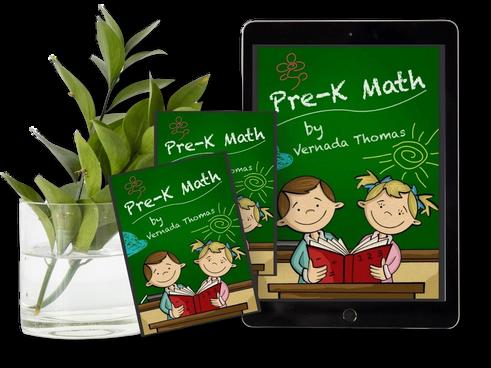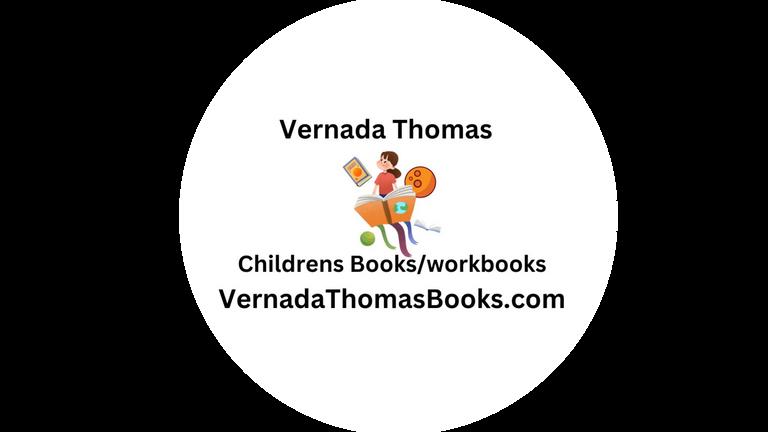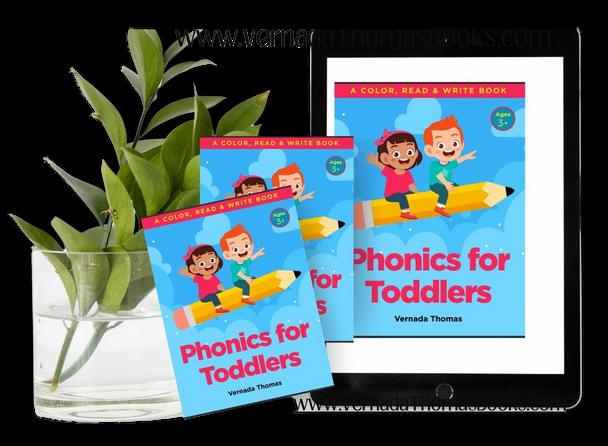PHONICS PHONICS
FOR FOR TODDLERS TODDLERS
Learning can be fun, and this book is a great tool to enhance the teaching and learning process, allow children to interact with their teachers, and improve the teacher/student relationshipall while developing their minds.

This book is a positive learning tool that would make a great addition to any classroom.
Buy This Book
In My Preschool on a Page UpperCase Letters & 1-20, young students are introduced to the letters of the alphabet in tracing exercises with upper-case letters and then practice writing them on their own.
Numbers are also presented in an engaging way with a lesson in phonetics as well as exercises for tracing and writing numerals.
Children need several skills to excel in kindergarten. First and foremost, you need to ensure that your child can play well with other children, that they are potty trained and are confident and not afraid to ask for help.
january 2, 2023
NEWSLETTER
Tips On How To Teach A Child To Read HELPYOURCHILD PREPAREFOR KINDERGARTEN vernada thomas children's books Buy the book here Observe Towards Optimizing your teaching and the LittleLearner's Learning Style Website: vernadathomasbooks.com Issue: 2 Remember, make it fun!



NEWSLETTER january 2, 2023 www.vernadathomasbooks.com vernada thomas children's books Cover page From Kid to scientists Volunteering Tips On How To Teach A Child To Read Tips On How To Teach A Child To Read ( continued: Uppercase letters, phonics, conversation, reread ) Other than reading books | Stimulate and Challenge kids other ways intellectually Balance Phonics And core words or high-frequency words Increase early reading proficiency! Emphasize Educational Gifts for Kids 1. 2. 3. 4. 5 6 7. 8. 9. Table of Contents Website: vernadathomasbooks.com
NEWSLETTER january 2, 2023 www.vernadathomasbooks.com If you can, provide volunteer service at community events with your child. This will help them with developing more social skills, heighten their perception, and stimulate their curiosity and creativity. Creativity is a domain of the scientist scientists have to use their creative imagination to come up with explanations after their experiment(s ) VOLUNTEERING ACTIVITIES vernada thomas children's books Kid scientists Read a lot Be cautiously curious and Always Ask Questions Enjoy Nature and/or Outdoor with adult supervision Enroll in STEM program(s) Partake in science programs Consume Science Media. Enroll in Science Elective Courses. Take Coding Courses. Research revolutionary concepts and beyond.... 1. 2. 3. 4. 5 6 7 8. 9. 10. Help Your Kid(s) become young scientists by encouraging them to: Table of Contents Website: vernadathomasbooks.com
Tips On How To Teach A Child To Read
Let me start by saying that “ Reading Comes With Time And Practice.”
All in all, and as with many endeavors, patience, practice, development and testing of some systems while emphasizing activities that enable your child(ren) to find/make reading enjoyable, fun, exploratory and fulfilling are necessary requirements. Then, stick with the most efficient and effective strategy(ies.)
Should you ever need a bit of support, visit the vernadathomasbooks.com website to find relevant and appropriate literacy books that will help you with your child’s reading journey with confidence.


Some Tips For How To Teach A Child To Read
These tips are simple, can fit into your lifestyle, and help build foundational reading skills while having fun!

1) Letter Sounds is one effective process One effective method is to help kids jump from letter sounds to words. For example, teach them the sounds associated with each letter of the alphabet. For instance, explain how B makes the “b” sound (pronounce b for them just like it sounds when you say the words ball or bat aloud). As soon as kids establish a firm link between a handful of letters and their sounds, they will start sounding out short words.
Once they master the sounds for B, T, and A, it will be easier for them to sound out words like at, bat and tab. Their vocabulary will start building as soon as the number of links between letters and sounds grow.
N V A L U A B L E A S S E T A L B E R T G I B O S S E
Table of Contents Website: vernadathomasbooks.com
Tips On How To Teach A Child To Read (Continued )

2) Begin With Uppercase Letters
Practicing how to make letters is way easier when they all look unique and are easier to distinguish from one another and easier to identify Look at it this way, whereas “b” and “d” look really alike, “B” and “D” are quite distinguishable. That is why starting with uppercase letters is more effective at helping your child grasp the basics of letter identification towards efficient reading. Couple with that, uppercase letters is useful at engaging their sense of physical touch
3) Use Phonics
Phonics help learners associate sound to letters one at a time. Once the learner develops the necessary level of automatization, they will start sounding out words almost instantly and, to a certain extent, might even start employing decoding, automatically, with words of different lengths.
4) Conversation - Engage Your kid(s) In Productive Conversations
Kids absorb everything, continuously, including every word you say. Reading them interesting stories will engage and strengthen their listening and storytelling skills, and increase their vocabulary. Talking and reading can also help them form sentences, become familiar with new words and their usage, as well as informing their contextual clues. All of these skills are extremely helpful for your child on their reading journey, and talking gives you both an opportunity to share and create moments you’ll treasure forever!
5) Make it fun - Avoid Overwhelming Them
Make reading fun and exploratory by using text, relevant pictures and illustrations, and, ensure that the environment is relaxed and conducive to learning. It helps to be consistent and to always emphasize qualitylearning over quantity
It is also a learning opportunity for you to identify the best strategy: what will keep your child interested and engaged in learning.
6) Repeat exercise - Shared Reading
Read with your child(ren) and ask them to repeat words or sentences back to you every often and direct their attention to the corresponding written parts
Always emphasize the pronunciation and meaning of the word with them
Taketurn: for every line, sentence, paragraph or page you read, have them read the next This will help build capacity and confidence Also encourage them to engage more with the book in front of them by encouraging them to emphasizing upon the pictures while listening to the story, which, in essence, is aimed at guiding their focus on the words they are reading. This is an effective technique that will acquaint your children with the natural rythm of reading.
7) Rereading
Growing up and even well into adulthood, some of us, if not most, had that special connection with at least one book that we reread many times and kept with us almost for a lifetime It might have been that book that featured such a compelling story, which we played over and over in our head and developed a special connection with the characters and the storyline Each time we read the book, we understood and afforded more meaning to the storyline and found it more pleasure in each and every meaning. We got to a point in which we even memorized the words we read and, perhaps, even acted as actors in different scenes.
Rereading allows children to further familiarize themselves with words and develop a deeper understanding of them, which they, subsequently, start incorporating into their vocabulary certain level of proficiency in spelling, encourage that they employ them in short sentences
Table of Contents Website: vernadathomasbooks.com
8) Stimulate and Challenge them other ways
Reading books is not the only way to help kids with reading. You can play spelling games. One great idea is to encourage them to familiarize themselves with objects in their surrounding and learning how to spell the name of each of the objects Once they reach certain level of proficiency in spelling, encourage that they employ them in short sentences.
9) Balance Phonics And core words or highfrequency words
core/high-frequency words are common words that are usually not spelled the way they sound and can’t be decoded; they are also an important part of teaching your child how to read.

It is recommended that you spend time developing and reinforcing the information and skills needed to sound out words
Always Emphasize Educational Gifts for Kids
Educational Gifts( educational books and educational toys, and beyond ) for Kids are
as they help reinforce intellectual qualities in little learners and help stimulate their creative skills and curious side, improve their social skills as well as gross and fine motor skills, problem solving and decision making abilities.

Vernada Thomas Books vernadathomasbooks.com

(Continued )
Tips On How To Teach A Child To Read
important
Also see: Observe Towards Optimizing your teaching and the child's( dren ) Learning Style Table of Contents Website: vernadathomasbooks.com
Like adults, every child has a different learning style and pace See each child's learning ability to learn in a unique way, not only capable of learning but also capable of succeeding using their own way. Even adults process information in different ways.


Observing what a child does and how they do it is the best way to learn about their learning style Clues can be extrapolated from their reactions/actions vis-a-vis certain circumstances(toys, books, reading, peers, adults, the environment, and everything that surround them or that they come into contact with); also, their attentiveness to and liking of certain things will provide insights into how they process information
If you notice any abnormality, please consult a professional in that sphere or run that by their pediatric doctor toward identifying the best way to address this issue early on.

Increase early reading proficiency! Kids-tested, parents approved Effective learning for ages 2 and up Rated best books for early learning across subjects by teachers and parents Vernada Thomas Books vernadathomasbooks.com
Observe Towards Optimizing your teaching and the LittleLearner's Learning Style
Table of Contents Website: vernadathomasbooks.com
vernada thomas's inspiration
"My inspiration for creating these versatile books came from my rewarding tenure as a kindergarten teacher in Haiti I also had a very gratifying experience teaching my son, Robert When he was young, he was diagnosed with a speech delay during early childhood, but I knew that I was not going to let that hold him back


Despite the diagnosis, my son always had a book in his hands. He loved listening to rhymes and gazing at colorful illustrations while I read to him. Before long, it became clear that the repetition included in our interactive, read-out-loud sessions began to positively affect my son ’ s condition much sooner than doctors had anticipated.
Inspired by my son ’ s speedy progress, I created worksheets with the alphabet, phonetics, math, and writing exercises I began by using them with my son before I also used these worksheets with my niece, Richeska, who moved here from Haiti at the age of five
Though she should have been in first grade, she was placed in kindergarten because she did not speak English After only three months of using my worksheets, Richeska was promoted to first grade! knew at that point that I wanted other parents to be able to see their children continuously progress at very young ages - even if they did not have any prior difficulties "
- Vernada Thomas
L E
Table of Contents Website: vernadathomasbooks.com Conceptualized, designed and edited by: Albert Gibosse Contact us: vernadathomasbooks@gmail.com
" T H E I N T E L
C T I S A N I N V A L U A B L E A S S E T W O R T H N U R T U R I N G " - - A L B E R T G I B O S S E














